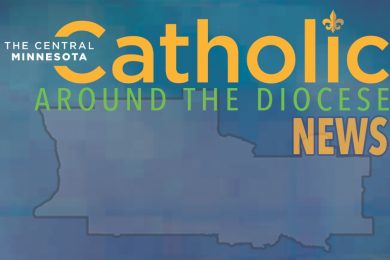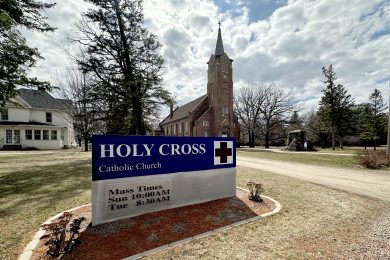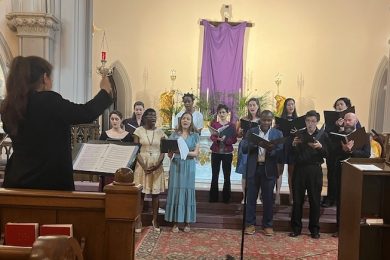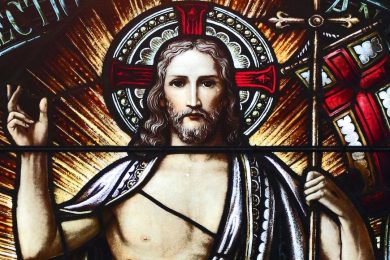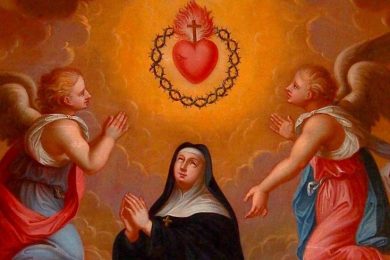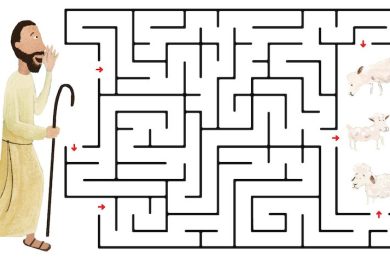By Mary Marrocco | Catholic News Service
Sometimes I imagine what it might have been like for people at the foot of the cross as Jesus’ body was taken down, wrapped in linens and spices, and taken away to the tomb.
Did some people bunch together, while others stood around in ones or twos silently?
I can imagine one or two efficiently creating a schedule of who should go to the grave when and with which spices; another inviting everybody to their house for refreshments; a few gossiping about who ran away first and with whom; others comparing notes on how long the darkness lasted, while another started to write down things that had been said and done, with someone else reminding him of some relevant Scripture passages.
In such ways and more, we cope with, or escape from, our hurts, wounds, fears — even joys. We can see this in the resurrection stories that have come down to us.
When the first stories came out of people seeing Jesus in the flesh after his death — the same, but different — there were as many reactions as there were people. Clearly those first Easter days were painful and confusing.
“They said nothing to anyone, for they were afraid,” says the most ancient resurrection narrative of the four Gospels; so ends the earliest manuscript of Mark.
At the conclusion of a weekend of violence, betrayal, death and despair following the Passover meal with Jesus, something else was starting to trickle in — encounters, hope, joy, new vision. Which was real? How could anyone know?
Where do we place our fears? Where do we place our doubt?
No matter what we worship, we must struggle with doubt about it. If it’s reason we worship, then we doubt reason; or we doubt science or family or finances. For Christians, we suffer doubt about the good news and the resurrection.
Our doubt can be a source of shame or make us believe we are “falling away” from our faith. Doubt can be agonizing. But it is not escapable. What do we do with it?
On the Second Sunday of Easter (in early days known as Antipascha; now also named Divine Mercy Sunday), we are given a real place for our doubts and struggles.
The church gives us the doubts of Thomas as part of the Easter celebrations. And so it allows our doubts to be, not a burden, but rather a motor by which we go deeper into our relationship with God — in the very situation we are in, no matter how painful or confusing it may be.
Thomas voiced his doubts within 24 hours of those first eerie reports of Jesus, post-burial, talking and eating with his friends.
“With his searching hand, Thomas explored your life-giving side,” says an ancient hymn for the feast. His hand, moved by doubt, actually led him to touch bodily the fire that burns within the heart of Christ.
This heart is a heart doubly pierced. First, by the violence of a Roman spear. Second, by the hand of a friend who could not believe the joy of the resurrection.
Our doubts, our own broken stories, are not to be denied, buried under heavy stores of guilt and shame, but rather are a reason to move toward Christ. Here, “take your hand and thrust it in my heart,” you will find what you are seeking.
Thomas’ mind needed to understand so that his heart could feel; or perhaps his body needed to touch so that his mind could understand. In any case, he accepted the invitation to explore the open side and touch the pierced heart. What did he find there?
Was Thomas willing to let Christ touch his side, his broken places and his longing heart? It’s not easy to trust even a skilled physician to touch our wounds and open them to healing. It’s hard not to protect them by those coping skills and escape apps we know so well and use when gathered at the foot of our own crosses.
Our doubt is partly doubt of ourselves: Are we good enough? Could what is truest, best and most beautiful really be true, really be for us?
Back in 17th-century France, a powerful movement known as Jansenism tried to keep people at a distance from God. No one had a faith that was “good enough,” it said; people didn’t “deserve” grace.
Then, in a small French village, the Sacred Heart of Jesus was shown to an insignificant nun, who shared it with others. This meant that now, in the most imperfect or poorest of households, the fire of the side that Thomas explored would burn.
It’s not imperviousness to pain and doubt that strengthen our Christian faith. We may not know how to be present to the joy of the resurrection even when we feel it, or to the burning heart of God even when it burns inside us on the road we walk.
Mary Marrocco can be reached at marrocco7@sympatico.ca.
Image: The hand of Christ is depicted by Lucas Turnbloom in an illustration for Easter. After his death, Jesus proved to the disciples that he was not a spirit by showing them the wounds in his hands and feet. (CNS illustration/Lucas Turnbloom, The Southern Cross)

